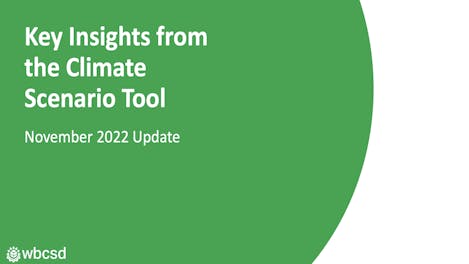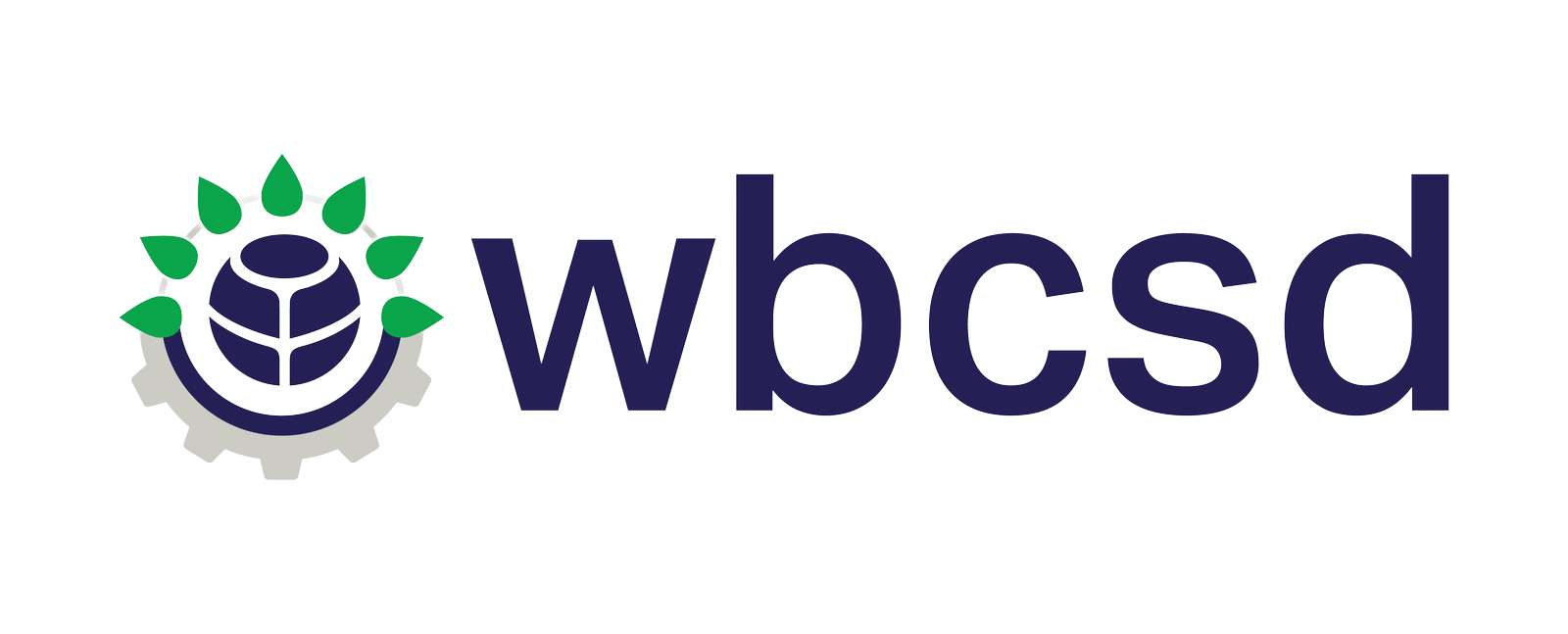
TCFD Climate Scenario Tool for Food, Agriculture and Forest Products
The World Business Council for Sustainable Development (WBCSD) is the premier global, CEO-led community of over 200 of the world’s leading sustainable businesses working collectively to accelerate the system transformations needed for a net zero, nature positive, and more equitable future.
We do this by engaging executives and sustainability leaders from business and elsewhere to share practical insights on the obstacles and opportunities we currently face in tackling the integrated climate, nature and inequality sustainability challenge.

Explore the Tool
The Climate Scenario Tool is an online scenario catalog that allows companies to browse scenario options, understand underlying scenario assumptions, and explore potential market and environmental implications.
Users can navigate by specific variables (e.g., commodities and regions) and compare, visualize, and download output data (e.g., production, prices and emissions). The tool covers 23 commodities and 18 regions, and the scenarios offer 15 outputs covering business, land use, and environmental variables.

Get The Tool
1
Download the Scenarios Analysis and Application Guide
The primary objective of the Scenario Analysis and Application Guide is to build an understanding of the features and value of the Climate Scenario Tool, the outputs of scenario analysis, and the potential use cases for companies.
The Guide provides important background as both an introduction for those new to climate scenarios and context for more experienced climate analysts that may use the tool to improve their analysis.

Download the Paper on Transition Planning and Climate Scenario Analysis for Food, Agriculture and Forest Products
This document is a collaboration between PwC UK and WBCSD and is a companion guide to the Climate Scenario Tool and Climate Scenario Analysis and Application Guide for Food, Agriculture and Forest Products, launched in November 2022.
It presents learnings from the development of the Climate Scenario Tool and its application to transition planning, including the development of climate transition plans and how scenario analysis can be used to inform transition planning.

Let Us Send the Tool and Resources Straight to Your Inbox
Share your email and we’ll deliver the Climate Scenario Tool, the Scenario Analysis and Application Guide, and additional information directly to your inbox. We’ll also keep you in the know about important updates such as upcoming trainings, webinars, events, and more.

TCFD Climate Scenario Tool for Food, Agriculture and Forest Products
Understanding Strategic Resilience to Climate Risk

As a complement to WBCSD’s existing Energy Scenario Catalogue, WBCSD convened leading Food, Agriculture and Forest Products companies to develop a set of new sector-relevant climate transition scenarios to assess strategic resilience to climate risk and inform disclosures in response to the recommendations of the Task Force on Climate-Related Financial Disclosures (TCFD). The scenarios are available through an online tool enabling users to navigate by specific variables (e.g., commodities and regions) and compare, visualize and download output data (e.g., production, prices and emissions).
Download the Technical Guide
The Technical Guide provides detailed documentation related to the scenarios and underlying drivers used to generate the Tool’s outputs, as well as the methodology used to develop the scenarios. The Technical Guide also provides more information about the approach and limitations associated with the economic and land use modeling employed by Vivid Economics to generate the Tool’s outputs.

Download the Key Scenario Insights
Based on supporting analysis by Vivid Economics, the Key Scenario Insights document guides users of the Climate Scenario Tool by providing additional insights on drivers and trends across commodities. It offers an overview of the production and price outputs for selected regions and commodities, where trends may not be easily discerned.

This project is made possible through funding from the Gordon and Betty Moore Foundation and the Norwegian International Climate and Forest Initiative's Funding Scheme. As the technical knowledge partner for this effort, Vivid Economics by McKinsey provided economic and land use modeling and scenario development support. PwC provided business application, training, and transition planning support.
Every company must understand how climate change will affect them, not just today, but in the future — nowhere is this more relevant than in the food, agriculture and forest products sector, where the effects of climate change will be particularly complex across commodities, geographies, and time. Yet until now, no standardized tool existed to help these industries align around a consistent set of data.
Scenario analysis is a process of evaluating possible future events and predicting feasible outcomes, enabling a shared understanding of potential futures based on various factors. It provides a scientific basis for decision making and alignment, across both organizations and supply chains, as well as for investment approaches to increase resilience across systems.
The TCFD Climate Scenario Tool models multiple drivers across the food, agriculture, and forest products sectors to create a wide range of climate scenarios for analysis. Companies can use the tool to design strategies, support disclosure, and take action to address the ways a changing climate may impact their business.
Early users of the tool have said it enables their companies to:• Better manage and assess future climate transition risks and opportunities
• Think ahead and invest in approaches that increase resilience across systems
• Inform and align decision-making processes within organizations and across supply chains
• Understand how a decarbonized future might unfold and meet sustainability goals
• Empower the entire value chain to use consistent methods, increasing confidence in results
• More efficiently and effectively meet disclosure and regulatory recommendations and requirements, including those from TCFD
On this page, you can explore the tool and its associated learning resources, plus sign up to receive additional information.
Additional Resources
2
Download the Report "Assessing the Financial Impact of the Land Use Transition on the Food and Agriculture Sector"
This report was published by the Race to Zero, the UNFCCC-supported global campaign rallying non-state actors — including companies, cities, regions, financial, educational, and healthcare institutions — to take rigorous and immediate action to halve global emissions by 2030 and deliver a healthier, fairer zero-carbon world in time.
An example of how scenario analysis can be used to inform actionable reports, this analysis presents the results of a credible forecast of the accelerating climate and nature transition. It uses data to explore the impact the nature transition could have on the value of 40 of the world’s largest food and agricultural firms worth over $2 trillion.

Access Self-Paced Training
We have developed a free self-paced training module to help guide you through using the Climate Scenario Tool. This module is divided into four sections and will help you familiarize yourself with the Climate Scenario Tool, what it does, and how to use it. You can access these learning blocks in any order and revisit a block as many times as you wish.

